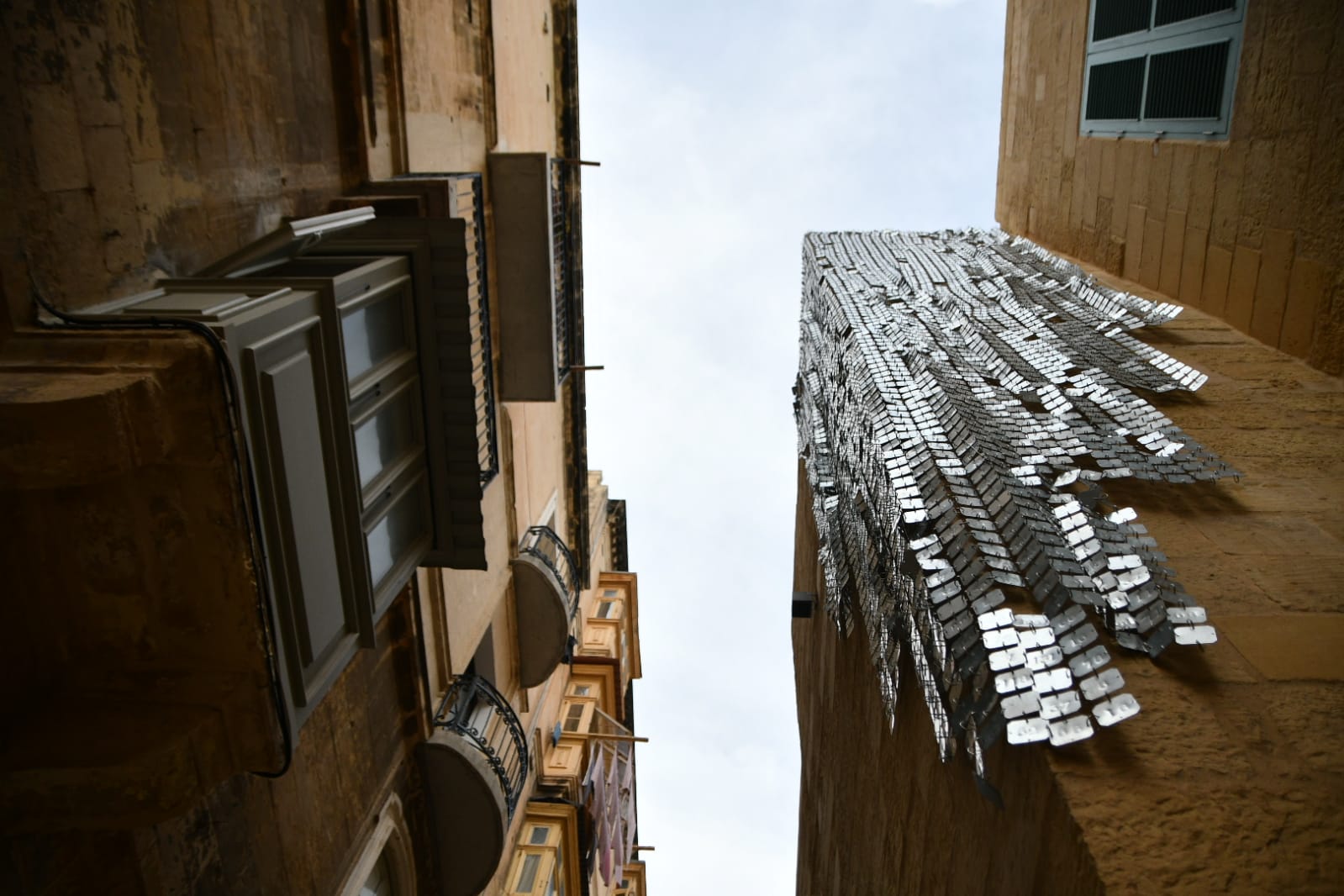Informed by the community’s stories of the local bakeries and ritualistic Sunday roast, Ix-Xuwa adopts as an object of repetition the seemingly insignificant metal tags which were used by bakers to identify the owners of different roasting dishes.
The tags here serve as a moment of fusion between the past, present and future of the Biċċerija area.
A tapestry of 5,000 ċipep or ċombi, Ix-Xuwa represents the eight bakeries and the vast and large community which used to live in the Biċċerija area. The artwork accesses stories and histories at various levels – the kids who used to take the dish with the Sunday roast to the bakery and their many stories as well as recent Maltese history.
“What we find interesting is the tags were a conduit for the relationship between bakeries and the community. Through the artwork, we are trying to recognise this seemingly everday object as a more important historical object,” the team explains.
Ix-Xuwa reflects on one of the nine curatorial themes of fuse, Transaction. Commercial activity in and around the Biċċerija area was rather vast. Acting as an offsite market, the area was home for multiple shops such as bazaars and grocers and other rarer outlets such as tattoo and wine parlours. At times, residences and businesses co-existed especially in the case of seamstresses who used their homes to create commissioned costumes and clothing for barmaids and Carnival companies. The area however remains synonymous with the numerous bakeries, eight of which had ovens inside the Biċċerija, others in surrounding streets. Names and legacies such as id-Duddlu, iż-Żużu, Johnny tal-Pasti and iż-Żerrek, make reference to the livelihoods generated by these outlets.
Curated by Elyse Tonna, fuse is a collaborative visual arts and research project which explores and uncovers aspects of the intangible history and the intangible stories of the area.
